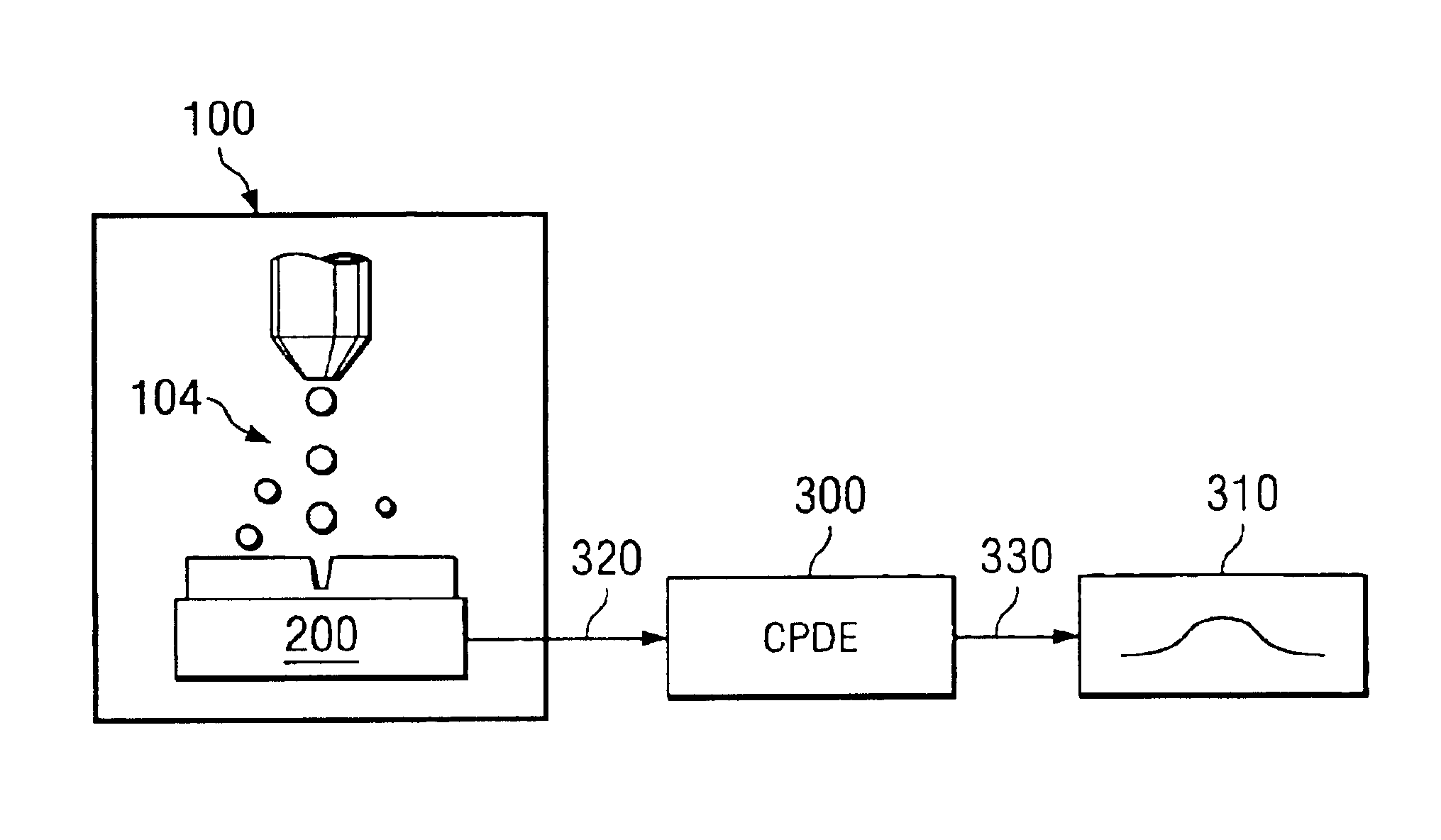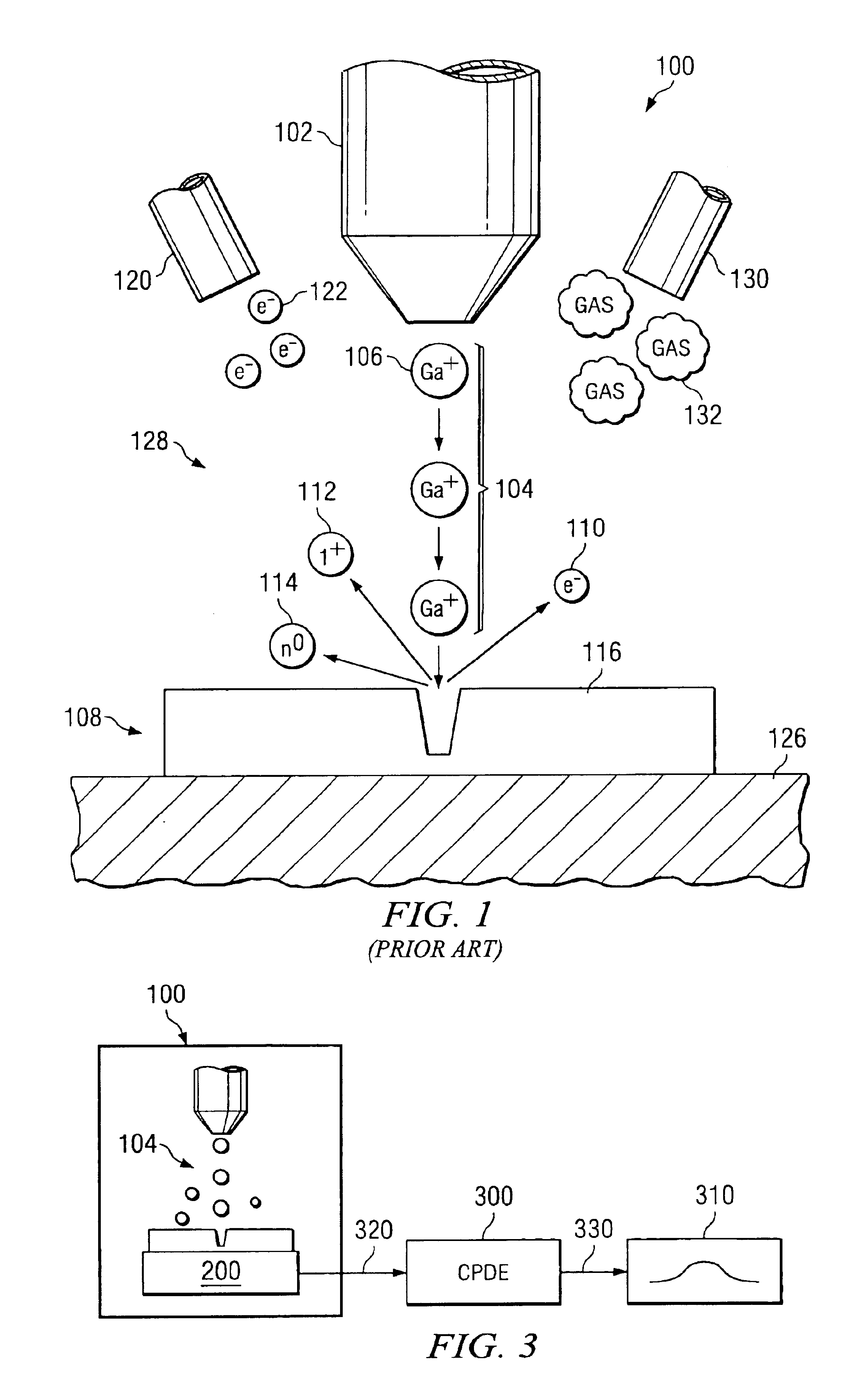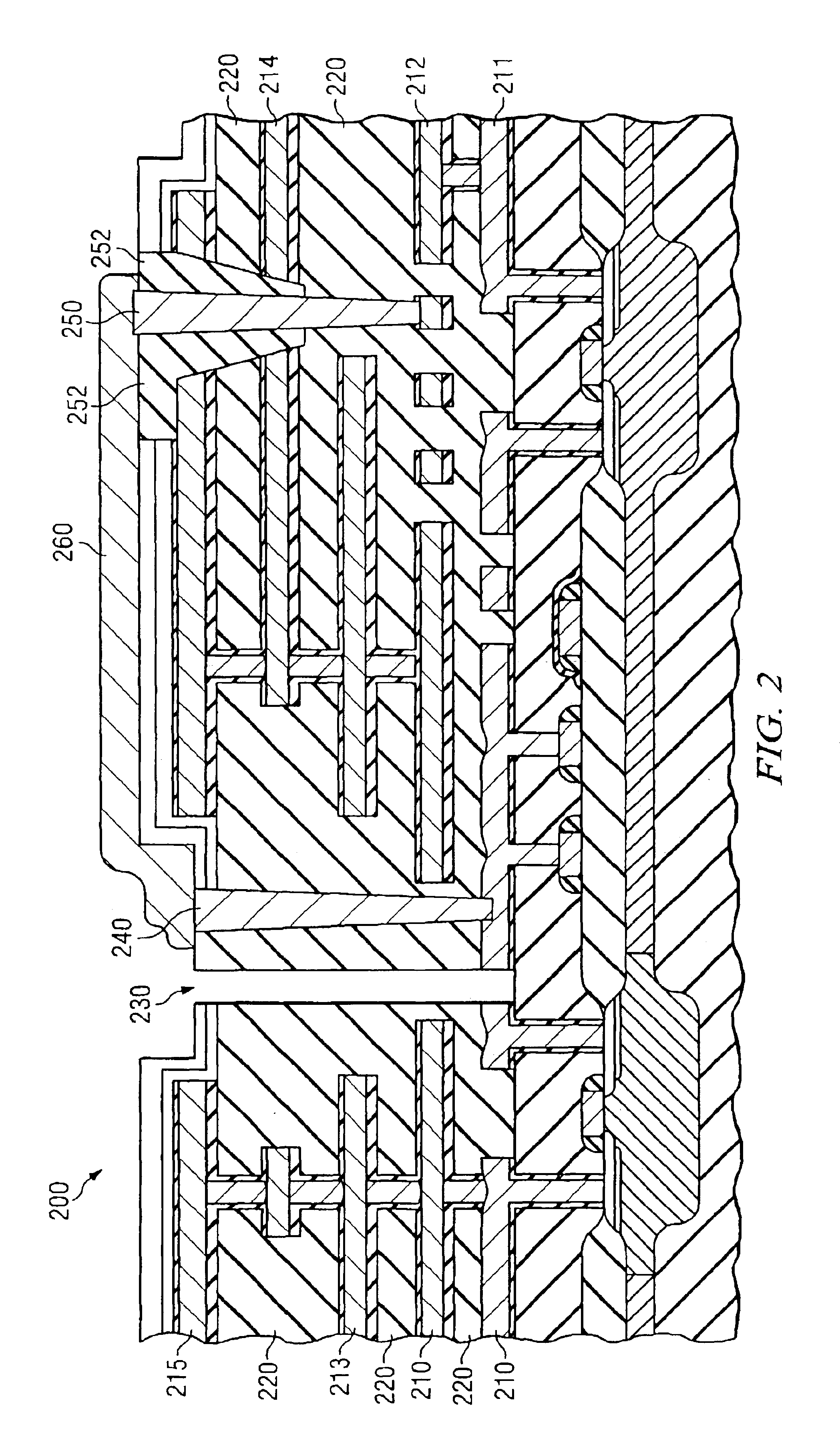Focused ion beam endpoint detection using charge pulse detection electronics
a technology of charge pulse and endpoint detection, applied in the direction of individual semiconductor device testing, instruments, nuclear engineering, etc., can solve the problems of electrical malfunction or design flaw, increase in the number of devices, and inability to accurately endpoint, etc., to greatly reduce the success rate of a given device edit operation
- Summary
- Abstract
- Description
- Claims
- Application Information
AI Technical Summary
Benefits of technology
Problems solved by technology
Method used
Image
Examples
Embodiment Construction
[0029]The following discussion is directed to various embodiments of the invention. Although one or more of these embodiments may be preferred, the embodiments disclosed should not be interpreted, or otherwise used, as limiting the scope of the disclosure, including the claims, unless otherwise specified. In addition, one skilled in the art will understand that the following description has broad application, and the discussion of any embodiment is meant only to be exemplary of that embodiment, and not intended to intimate that the scope of the disclosure, including the claims, is limited to that embodiment.
[0030]Disclosed herein is a method for endpoint detection that may used when milling with a focused ion beam (FIB). FIG. 2 shows a cross-sectional view of typical integrated circuit sample 200 with exemplary device modifications formed by an FIB. Integrated circuit 200 includes several metal layers 210, which are conventionally labeled MTn, where n is a layer number commonly desi...
PUM
 Login to View More
Login to View More Abstract
Description
Claims
Application Information
 Login to View More
Login to View More - R&D
- Intellectual Property
- Life Sciences
- Materials
- Tech Scout
- Unparalleled Data Quality
- Higher Quality Content
- 60% Fewer Hallucinations
Browse by: Latest US Patents, China's latest patents, Technical Efficacy Thesaurus, Application Domain, Technology Topic, Popular Technical Reports.
© 2025 PatSnap. All rights reserved.Legal|Privacy policy|Modern Slavery Act Transparency Statement|Sitemap|About US| Contact US: help@patsnap.com



